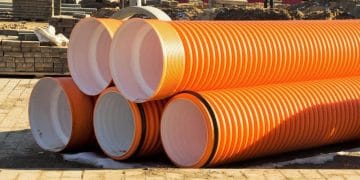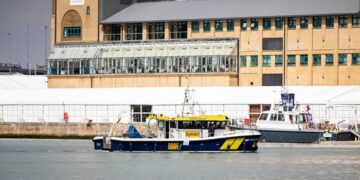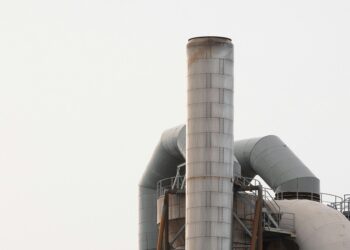Thames Water is hoping to help improve the water quality of the River Thames by investing £220m at Crossness STW and £190m at Beckton STW to help stop sewer overflows.
The two projects were part of Thames Water’s London Tideway Improvements programme. Crossness STW serves approximately two million people and the scheme is designed to meet the higher environment standards required by the Environment Agency (EA), and the improvements enable the site to treat 44% more sewage than it does currently, significantly reducing the amount of storm sewage that overflows into the River Thames during heavy rainfall when the site’s treatment capacity is exceeded.
Beckton STW was already one of Europe’s largest works and the expansion now enables the site to treat the waste of 3.9 million people, up from its former population capacity of 3.5 million. The upgrade enables the works to handle 60% more sewage during storms and has been designed to treat increased flows from the terminal pumping station at Abbey Mills, additional storm flows from the Lee Tunnel, plus flows from the future Thames Tideway Tunnel. Both schemes allow for a population increase of up to 10% through to 2021.
Both sites will create additional sludge. Part of the scheme involves improving the sludge storage and thickening facilities, both in terms of capacity and efficiency. There will be five raw sludge gravity belt thickeners a site, each with a capacity of 6,055m³/day at 2% DS.
One of Thames Water’s appointed contractors for the upgrade, GallingfordTry Biwater Mott, approached ABLE Instruments & Controls to assist them with the supply of pressure switches for critical pump protection on the sewage sludge dewatering and mechanical compression systems, where reliable set-point retention is vital. To date, 84 United Electric OneSeries digital pressure switches have been allocated to Crossness & Becton sites.
Energy may be recovered from the sludge once the compression process is complete, either by burning the methane gas produced by anaerobic digestion or incineration of the dried sludge itself. This will be augmented by the installation of a wind turbine providing 2.3MW of renewable energy. The aim is to have a completely self-powered site and to be able to feedback excess energy to the national grid.
Being one of the largest treatment works in the UK, Crossness STW, along with its sister site, Beckton STW, represent the two largest wastewater improvement projects to be delivered for Thames Water in AMP5.
For more information, please contact ABLE.

















































